The Lair of the White Worm was the final novel by Bram Stoker of Dracula fame, and while the 1911 book is no Dracula (among other things, Stoker was suffering from dementia at the time), it does have marked vampiric similarities. This was perhaps what drew Ken Russell to the novel — as a kind of consolation prize for his thwarted plans to film Dracula. Whatever attracted Russell to the material, his 1988 film version of Stoker’s book proved to be one of the director’s most accessible works and introduced him to an entire new generation of fans. It’s easy to understand why, since The Lair of the White Worm is an almost perfect savvy blend of horror and comedy that honors the horror genre while standing it on its head.
On the surface, this may seem to be fairly lightweight Ken Russell. Certainly not the weightiest of material, it’s the deliberately campy story of Lady Sylvia Marsh (Amanda Donohoe), the vampiric high priestess of an ancient snake cult that dates back (as does she) to the time of the Roman occupation of England. And there’s no question that Russell has highlighted its every possible absurdity. Note that on both occasions when she’s about to do something pompously ritualistic, Lady Sylvia gets brought back to earth by some vexing mundane matter. (In the first instance, she is on a long ramble about human sacrifice when the doorbell rings. Her resultant, “Shit!” seriously lowers the tone.) After all, this is a movie where one hero, Lord James D’Ampton (an almost pubescently young Hugh Grant), is the epitome of Noel Coward Britishness and the other, Angus Flint (Peter Capaldi), is a Scottish archaeology student. The latter occasionally sports a kilt, plays bagpipes and has a sporran spacious enough to house a mongoose. It is also a movie where the title monster is partly made out of the front of a Volkswagen Beetle.
Essentially then, this a fun horror picture — with bouts of cheekily unrealistic gore and a fair degree of skin. There would have been more skin, but Catherine Oxenberg’s contract had a “no nudity” clause, so she appears rather improbably garbed in industrial-strength underwear as Lady Sylvia’s virgin sacrifice to the giant white worm of the title. Amanda Donohoe was rather more relaxed about the whole thing, seemingly ready to disrobe in the twinkling of an eye — and have herself painted blue if the scene required it (and a couple of them did). Actually, Ms. Donohoe proved herself pretty game for just about anything Russell threw at her.
The overall tone of the film is something like an episode of The Avengers, with Amanda Donohoe as a kind Emma Peel (Diana Rigg) gone very wrong indeed. In keeping with this, she drives about in a 1960s E-Type Jaguar (which has the added advantage of rather resembling a snake’s head). At the same time, Hugh Grant goes about the countryside in a Morgan — a British sports car with a body style that has looked about the same since the 1930s. For that matter, both Grant and Donohoe play their scenes in the best “veddy” British high-class manner. (Russell played them recordings of Gertrude Lawrence and Noel Coward in Private Lives to show them what he wanted.) Everything about the film is crafted to suggest that it takes place in some vaguely past era — or that it exists in a realm where time is strangely unfixed. Despite the sense of a jumble-shop assembly of the past, the film also has touches of up-to-date (in 1988 terms).
Beneath this surface, however, is a film that is just about as subversive as anything Russell ever made. As is often the case with Russell, there’s a central conflict concerning religion. In this case, it’s Christianity vs. a pagan cult. Here, the forces of good seem a lot less appealing than the forces of darkness. Because of the context, a scene of Lady Sylvia spraying venom on a crucifix goes unremarked, and fantasy scenes of Roman soldiers raping nuns (busty nuns with tear-away habits at that) while Jesus Christ is attacked by a giant white snake seem to bother no one. Again, it’s all context. If these scenes had been in Russell’s The Devils (1971), chances are they’d have been censored. And where most horror films end with a happy boy-and-girl climax or a suggestion of evil unvanquished, Russell offers us, well, something a bit different with a homoerotic undercurrent.
Make of it what you will. The Lair of the White Worm works as horror film or horror-film spoof. It works on a deeper level, if you want to go there. It can be a simple tale of valiant knights attempting to save ladies fair from the clutches of the monstrous villainess and her equally monstrous monster. For Russell fans, it’s full of in-jokes and references to other films. Two Russell regulars — Christopher Gable and Imogen Clair — show up in minor roles. Ken and his then-wife Vivian can be seen walking past in an early scene (Ken cries out, “Hello, Mary!” to Sammi Davis). He also provides the voice of the constable with the flat tire on other end of the walkie-talkie conversation. The film gets close to being a backyard sort of production in its off-handedness. In fact, the scene where Sammi Davis and Peter Capaldi walk home at night was illuminated by light from Ken’s kitchen window. Oh, yeah, one more thing — Ken Russell was personally terrified of snakes. Originally, there was supposed to be a sequel — Revenge of the White Worm — that was to feature Lady Sylvia’s equally evil twin sister, but nothing came of it — apart from a screenplay that was never made.
The Thursday Horror Picture Show will screen The Lair of the White Worm Thursday, July 2 at 8 p.m. in Theater Six at The Carolina Asheville and will be hosted by Xpress movie critics Ken Hanke and Justin Souther.



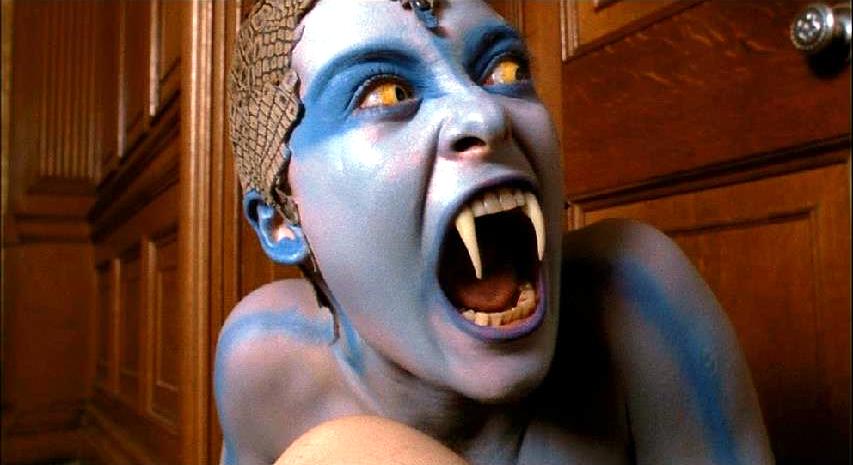
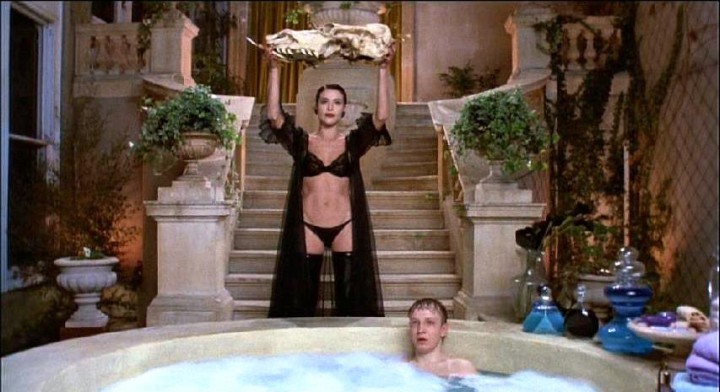
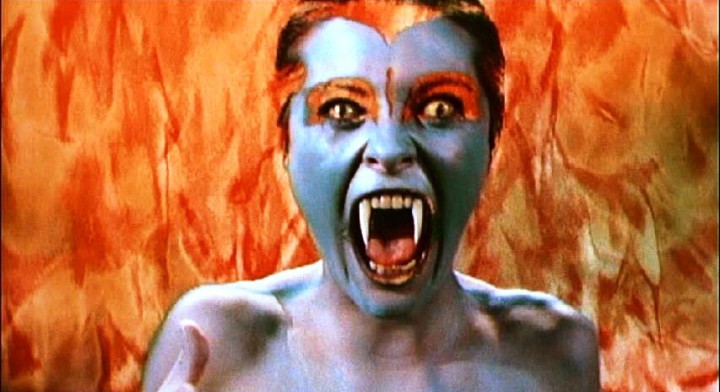
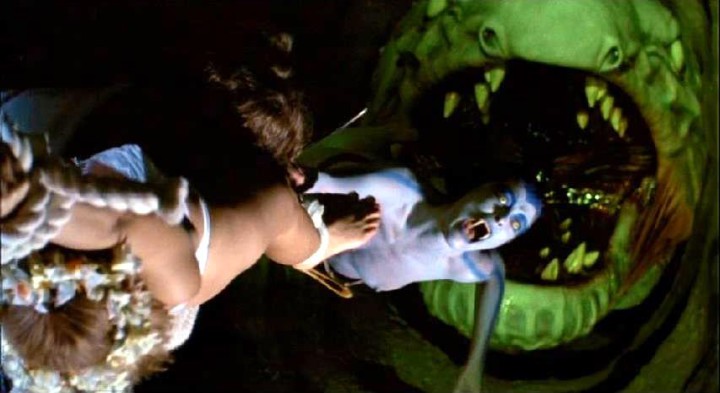
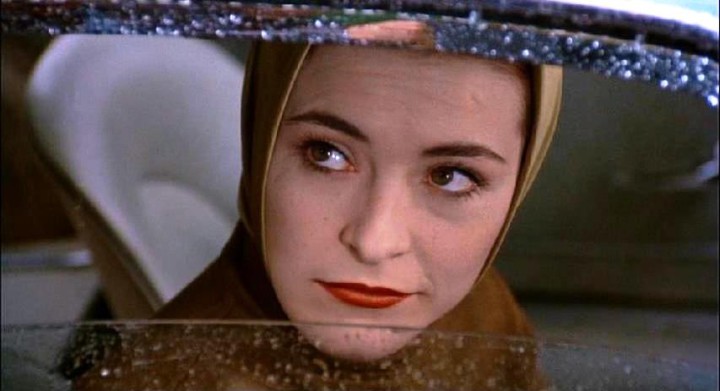

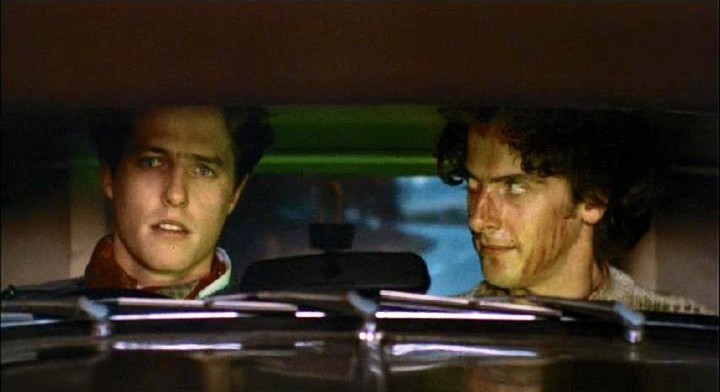
Wow, I share the same birthday as Ken Russell. How cool is that? Great movie. There used to a fun channel called Movie Time (it turned into a foul stinch known as E channel) and this was one of the first movies they promoted heavily. I regret giving my poster of this to a girlfriend years back. The things we do for love.